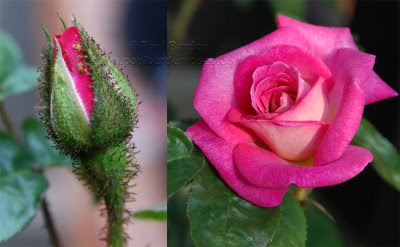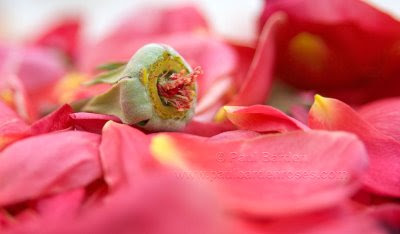Today I was asked a question about raising once-blooming (non-remontant) seedlings. "how do you grow your non-recurrent seedlings in pots? I have more non-recurrent roses coming on than ever, and keeping them in pots would be helpful. Unfortunately, I am not clear on how I can keep the pot size down to something reasonable, how long they should take to bloom, and how to water them."
This is a good question. Its a matter of managing space and energy and optimizing the process of maturing seedlings that may take three years or more to start blooming (usually two). Although three years ago I had the garden space to row out non-remontant seedlings as much as I wanted, I am now at capacity in the garden and so I must now grow my selections on in containers. Here's how it works for me: Crosses I make that I know will result in once blooming offspring are potted up into 3" square pots initially and grown on until June, or until they appear ready for potting on. At this time I evaluate the seedlings for health, vigor, architecture and overall attractiveness. In making this evaluation I try to assess the individual plant's likelihood of exhibiting one or more desirable traits, knowing that selecting for bloom quality/color later on will eliminate many of these.
From the 3" pot stage, selected seedlings are moved into 1 gallon black plastic nursery containers where most remain until the following year year. The following Spring, when these seedlings are 12 to 15 months old from germination, most of them will bloom for the first time. Some individuals/crosses may take longer, but the vast majority will flower at this stage. A culling occurs at this first flowering and any plants whose blooms are determined to be inferior will be discarded. The remainder are likely to be moved up into five gallon containers and placed in another greenhouse or outdoors in the open garden for further assessment.
If I select individuals from these once-blooming crosses for breeding purposes (because they have traits I wish to proceed another generation with) they may be potted on the following year (year three) into much larger containers that will likely sustain them for many years. I usually choose a container size that is about 24" across and 20" deep (or whatever I have available in that size range) for this purpose. Selections that are intended for breeding material will either be moved into my main breeding house, or if they are to be timed for pollination with roses in the open garden, they might be placed outside the greenhouse. (Plants kept in the greenhouse, even though it is unheated, often bloom three or four weeks ahead of the rest of the garden and so timing container grown plants to be in bloom when a pollen donor in the open garden is in bloom requires some planning.)
Once-blooming selections that are potentially viable on their own merits as commercial shrubs are likely to be planted out directly in the garden from the five gallon stage, as these will need permanent locations to establish them properly. Its getting difficult to find places for these now, but I am culling plants from oen of the test beds every year so locations do open up every Summer. I still do some breeding with Gallicas, with the goal of producing new Gallicas in the traditional style, and these require placement in the garden in order to perform properly.
If I've omitted any details in this description, please ask for more information by commenting, thanks.


























I was asked the other day: "To get 100 seedlings or so from a cross how many flowers do you pollinate on average. And if something turns up that is great do you repeat that cross once more or do you stop there."
Good question.
That really depends on what the track record of the seed parent is like. If I was to use 'Sequoia Ruby' for example, I would need to pollinate maybe 20 or 25 blooms to guarantee 100 seedlings since nearly every seed it makes germinates. So it all depends on the seed parent. Sometimes you have to just guess and hope.
I have fallen into a pattern of planning crosses in two year cycles, which is to say that if I want to try a cross and I am very uncertain of its viability, I will just pollinate ten blooms or so and see what happens, If the seeds germinate poorly, or not at all, I don't bother trying to repeat it. Sometimes you look at a large population of seedlings from a cross and you select ten from it and they are all very similar, in which case I wouldn't likely repeat the cross, assuming I got the best it had to offer. If I only got 5 seedlings and they all looked very different and very interesting, I would definitely repeat the cross in larger numbers.